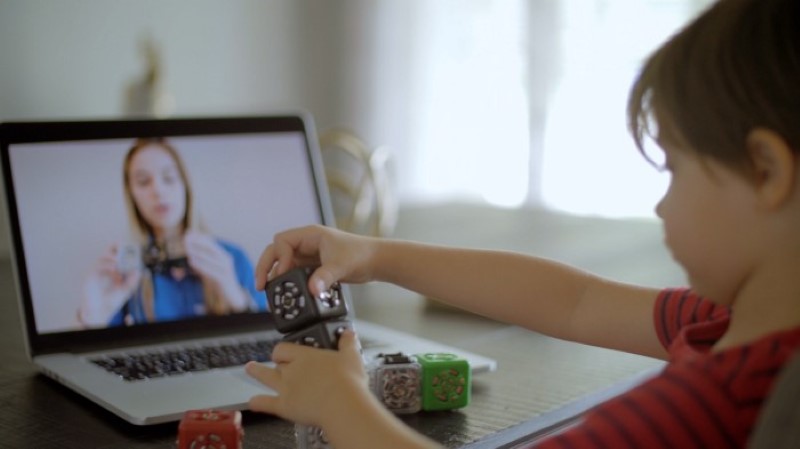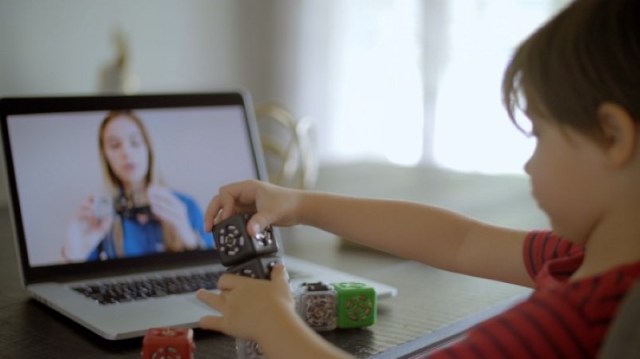
Let’s face it online learning has been a struggle for everyone—kids, parents, and teachers. As the virtual classroom continues, many kids may be losing momentum and parents are certainly feeling drained (there are only so many times parents can yell “turn the mic on!”). With no end in sight anytime soon, I wanted to share some virtual learning tips to keep kids engaged and us parents sane.
1. Plan Ahead, Emotionally & Technologically. Kids can pick up on stress or pessimism quickly. It is going to be draining, and not everything is going to go perfectly, but make sure to keep in mind what NOT to say to them. Stay positive, share the joy with them that you would have shared every day when sending them off to school. Technical issues are also inevitable, so be sure to be proactive and have a back-up task to keep kids busy and engaged until the problem is resolved.
2. Set Expectations. Kids need to be reminded of what is expected of them. Just because the classroom is in the kitchen doesn’t mean it’s recess or lunchtime all day. When setting expectations upfront, your kids will have something to keep them accountable and present. Present these on a mental and physical basis—I expect you to pay attention, not to speak over other people, and to get dressed every morning as if you were going into the classroom. Even just getting them out of those pajamas and into actual clothes can make an incredible difference in their ability to concentrate! Even with clear expectations, you can bet things will be rough in the beginning. It took at least a week for my kindergartener’s meltdowns before each Zoom session to go away. Kids are built for routine, once you get them adjusted to the new routine things will be much better.
3. Environment Is Key. As virtual learning becomes more long-term, it’s important to set your child up in an area that is their own—just like in a classroom they have their own desk. Even if it’s a little desk in the corner, your kids will know that this is their space to learn and complete their assignments. I encouraged my kid to decorate their desk with their pictures he drew and school assignments he’s proud of. This helped him take ownership of his space and look forward to spending time there.
4. Help Them Minimize Distractions. Distractions are inevitable in the physical classroom, and now that the classroom is at home, everything can count as a distraction, especially when kids are surrounded by siblings, pets, and all of their toys! One of the hardest parts of virtual learning is that parents have to compete with the distractions around them. Kids can’t multitask, even if they claim that they can watch TV while doing homework or listen to a Zoom call while scrolling through social media, they aren’t multitasking. In fact, they are “task switching” which means their brains quickly switch back and forth between activities and leads to a decrease in performance, retention, and accuracy. A great way to keep your children focused is by engaging them in tasks completed off the computer.
Your little ones might need more time being taught, however, having them practice how to do simple things such as unmuting themselves or teaching them how to turn on their cameras is a good start. Take that time to actively practice these actions before the class starting to avoid a future stressful situation.
5. Maximize Face Time. No, not using their iPhones to communicate. Maximize the time that their main screen is their face, and make sure the teacher can see them most of the day. In the classroom, kids can easily switch focus from the board to the teacher’s face, but now the shared material takes up much of the screen and the teacher is very small. By having their cameras on, teachers can quickly engage them with a quick question or task.
6. Make the Most Out of Semi-Synchronous Learning. The vast majority of schools are providing semi-synchronous learning options for students. That means, they are not on the virtual call actively being taught the entirety of the day, but they also are not just given directions and expected to finish everything on their own, with no supervision. To me, this is the right way to do virtual learning.
It’s important in the virtual learning process to blend both synchronous and asynchronous learning. Asynchronous learning is learning that kids do on their own time. Synchronous learning is when students and the facilitator meet via Zoom. This is a critical part in not only keeping your kids engaged but in having them effectively understand the information they are being taught through a screen. This also allows us parents to have a little break from monitoring their Zoom calls–finally a little time to relax!
7. Use Different Ways to Increase Interaction. In-person learning built community and relationships, allowed for individual support, and was fun for the kids. So, now that we’ve transitioned to online school, it’s important to also adapt those qualities into virtual learning as well. To keep the sense of community going, parents should coordinate Zoom play dates with other classmates while they work on a project or even just for fun (kids need a break too!) this allows social interaction and for kids to show off their projects and help each other.
There are so many more tips and tricks when it comes to virtual learning that are worth sharing and learning from each other. None of us are going to be able to get through this with no mishaps or technical glitches, but with some of these tips, your little ones or even teens will have an engaged and effective learning experience. Most importantly, you should be proud of yourself and your kids for navigating the virtual classroom during such an uncertain time!











